Table of Contents
Due to an extreme shortage of auto parts in the Soviet era, Russians often couldn’t just get a new pair of windshield wipers at the store when the old ones wore out. It was common for someone to return to their car to discover that someone had nicked their wipers. The afflicted party might then grab a pair from a nearby car to replace their own. And so on, until large segments of the motoring population became engaged in a never-ending game of musical chairs (or rather wipers), grabbing them wherever they could.
This chain reaction became so widespread during the Soviet Union that almost no parked cars had visible windshield wipers. Instead, drivers would remove them with a screwdriver, and only put them back in case of heavy rain.
Bear with me, but there’s something similar going on in your body all the time: a process known as lipid peroxidation. Basically, the thief here is a free radical, and the stolen object is an electron taken from a lipid molecule in the membrane of a cell. That lipid molecule then becomes unstable, and in turn, grabs an electron from a neighboring cell, and so on and so on.
This process can really damage your health, affecting most chronic diseases, including type 2 diabetes, Alzheimer’s, atherosclerotic plaque (which itself can lead to heart disease and stroke), and cancer.
Fortunately, your body also contains crime-fighting compounds called antioxidants that fight free radicals and protect against oxidative damage. And one of the most powerful and ubiquitous antioxidants is glutathione.
First discovered in 1888 by J. de Rey-Paihade, a French doctor, glutathione was found in high concentrations in most of the cells of the human body, especially in the liver. These days, many health influencers talk about its benefits for a number of conditions, and also tout its potential to slow the aging process.
But what exactly is glutathione? What claims for its benefits are valid, and what’s currently just speculation or hype? How do you make sure you have enough in your body? And can you make it all yourself, do you need to get it from food, or do you need to supplement?
What Is Glutathione?

First things first: pronunciation. Since you’ll be saying “glutathione” to yourself a lot as you read this article, you might want to make sure you’re saying it right. The word is pronounced “gloo-tuh-thigh-own.” Or, for an image you might not be able to get out of your head, just picture gluing tuh’ your own thigh. (Or not. There’s a reason I’m not a linguistics professor.)
Glutathione is one of the most potent antioxidants in the body. It binds to fat-soluble toxins — the electron thieves that we just met — as well as heavy metals that make their way into the body. As such, it supports the liver and kidneys as they work to detoxify harmful compounds, both organic and inorganic. Glutathione also helps make proteins in the body and regulates the function of the immune system.
Your body naturally produces glutathione in your cells. The largest producer is the liver, which creates it from three amino acids: cysteine, glutamate, and glycine. That’s why glutathione is characterized as a tripeptide (“three peptides”).
Since glutathione serves to fight the free radicals that cause oxidative damage, we want our bodies to increase the concentration of glutathione in cells in response to oxidation. And one of the safest and most effective ways to raise resting levels of glutathione appears to be exercise. Just as lifting weights can grow your muscles and cardio can strengthen your heart, temporarily raising free radical levels through physical activity creates adaptations that increase glutathione activity throughout the body.
Benefits of Glutathione

Due to its key roles in detoxification, fighting free radicals, and making essential proteins, glutathione is indispensable for health. Low levels of glutathione are associated with a number of diseases and conditions. In some cases, clinical trials have revealed a causal relationship (that is, raising glutathione levels makes things better). And in others, it’s still unclear if low glutathione is a cause of a symptom, or if the condition itself has suppressed glutathione synthesis.
Glutathione and the Liver
Since the liver is ground zero for glutathione production, it makes sense that glutathione levels are lower in people with a variety of liver disorders and diseases.
Medical research has found that glutathione supplementation can help mitigate the effects of liver disease. A small 2017 clinical trial found that people with nonalcoholic fatty liver disease (NAFLD) had their liver function improve when given supplemental glutathione. This is good news, as NAFLD is associated with the development of insulin resistance (a root cause of type 2 diabetes), obesity, and high blood pressure.
Glutathione also appears to restore some liver function in those with alcoholic liver disease.
Glutathione and the Immune System
When your glutathione stores are low, your body is less able to fight off viral infections. And glutathione also participates in the development of trained immunity, whereby your immune system gets better at defeating pathogens through exposure. A 2021 study showed that high concentrations of glutathione in plasma cells were associated with some immune cells’ ability to “remember” past infections and deal with new ones more effectively.
One way glutathione supports the immune system is by inducing a phenomenon called macrophage polarization, in which macrophages (the immune cells that gobble up pathogens; their name is Greek for “big eaters”) can adjust their programming based on environmental signals. A 2022 microbiology paper argued that glutathione deficiency could even be a risk factor in life-threatening cases of COVID-19.
Glutathione and the Brain
One of glutathione’s impressive list of feats is its ability to regulate brain metabolism. It turns out that when glutathione function is impaired, the brain loses more neurons — a process that’s associated with cognitive decline, Alzheimer’s, and increased risk of depression and anxiety. It’s also clear that insufficient glutathione may contribute to Parkinson’s disease.
One of the challenges in glutathione research is knowing how to measure it accurately. Researchers are still debating the best way to determine brain concentrations of glutathione. Doing so is important because there’s evidence that too little and too much glutathione may contribute to mood disorders like depression and schizophrenia.
Glutathione and Cancer
As one of the “master conductors” of cellular behavior, glutathione can tell cells to do a bunch of different things, including divide, grow, protect themselves, and self-destruct. All these processes are involved in cancer. And glutathione appears to be a double-edged sword in this case. It can tell damaged cells to die, either through apoptosis (programmed cell death) or a recently discovered type of cell death called ferroptosis, which relies on iron and reactive oxygen species (ROS) to basically blow up a cell’s mitochondria from the inside.
But glutathione can also become a cheerleader for cancer; elevated levels in tumor cells can trigger the progression of tumors and increase resistance to anticancer drugs. It appears to be a matter of timing: Glutathione removes and detoxifies carcinogens, which prevents the initiation of cancer, but it also promotes the growth and metastasis of already-formed tumors.
It appears that glutathione isn’t a “more is always better” molecule when it comes to cancer. Good health depends on a homeostatic balance between oxidation and its chemical opposite, reduction. Too much glutathione appears to tilt the balance, and not necessarily in the right direction. So rather than simply giving someone a glutathione supplement, novel cancer treatments are looking at closely modulating glutathione levels and strategically “interfering” with different steps in the glutathione metabolic cycle to improve existing cancer therapies.
Glutathione and Type 2 Diabetes
There’s definitely a link between glutathione deficiency and the presence of type 2 diabetes. But it’s not entirely clear yet which one causes the other (or whether both are caused by an as-yet-unknown initial factor).
A 2018 study of just 24 people (16 with type 2 diabetes and 8 matched controls who did not have the disease) found that the people with type 2 diabetes had lower glutathione concentrations, suggesting that something about the disease might cause less tripeptide production. Additionally, it appears that there’s something about excess blood sugar that requires more glutathione, leaving less for other critical functions.
For someone with type 2 diabetes, the question of causality may be less important than finding out if glutathione supplementation can improve symptoms and mitigate progression.
A 2021 controlled trial out of Denmark sought to answer that question, studying the effects of three weeks of oral glutathione supplementation in 20 obese males — 10 with type 2 diabetes, and 10 without. The 20 were randomized to receive either 1,000 mg GSH (a common form of glutathione present in the body) or a placebo.
The results were promising: the group receiving glutathione improved their whole-body insulin sensitivity, meaning that it became easier for them to move glucose from the bloodstream into the cells. And the glutathione had apparently been absorbed and sent to where it was needed; a muscle biopsy confirmed that GSH concentrations increased by 19% in skeletal muscles. These findings occurred in subjects both with and without type 2 diabetes, suggesting that oral glutathione could help prevent prediabetes from developing into full-blown diabetes.
Ways to Boost Glutathione Levels
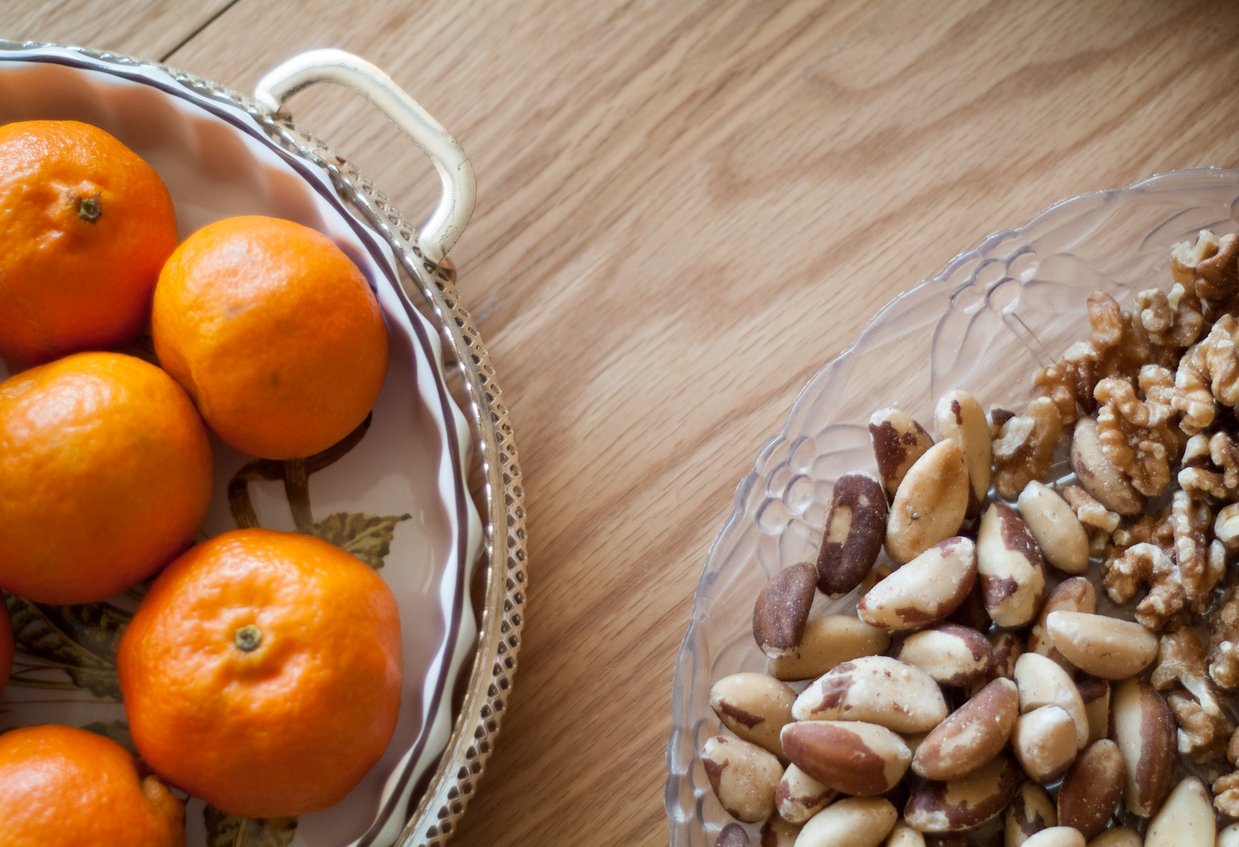
For most people, the best way to boost glutathione levels is to eat foods that contain glutathione or its precursors. (More on that coming soon.) A few of the nutrients that appear especially important to helping your body make and synthesize it effectively include:
Vitamin C: A group of researchers discovered that consumption of vitamin C supplements resulted in a rise in glutathione levels in the white blood cells of healthy adults. One particular study found that consuming 500mg of vitamin C daily led to a 47% hike in glutathione levels in red blood cells. For more on vitamin C, see our article here.
Selenium: One investigation analyzed the impact of selenium supplementation on 45 adults suffering from chronic kidney disease. The participants got a daily dose of 200mcg of selenium for a period of three months. The results revealed a significant increase in the levels of glutathione peroxidase in all of the participants. Another study demonstrated that the consumption of selenium supplements led to an elevation in glutathione peroxidase levels among patients undergoing hemodialysis. Perhaps the best way to ensure an adequate supply of selenium is to eat 1–2 Brazil nuts per day.
Turmeric: Turmeric is a brightly colored herb with vast therapeutic and anti-inflammatory properties. Several animal and laboratory studies have demonstrated that turmeric and its extract, curcumin, have the potential to raise glutathione levels. Researchers believe that the curcumin found in turmeric can enhance the functioning of glutathione enzymes. For more on turmeric and curcumin, see our article here.
Food Sources of Glutathione
Some nutrients are essential, meaning that your body can’t manufacture them and you have to get them from food (vitamin C, for example). But glutathione isn’t like that; you can manufacture it in your liver and increase its production by creating appropriate amounts of oxidative stress through exercise.
But that doesn’t mean nutrition isn’t important here. You still need to consume the building blocks of glutathione. And many plant foods provide those building blocks, either in the form of amino acids, precursor molecules, or in some cases, glutathione itself. The following are some of the best food sources of glutathione and glutathione precursors.
1. Alliums
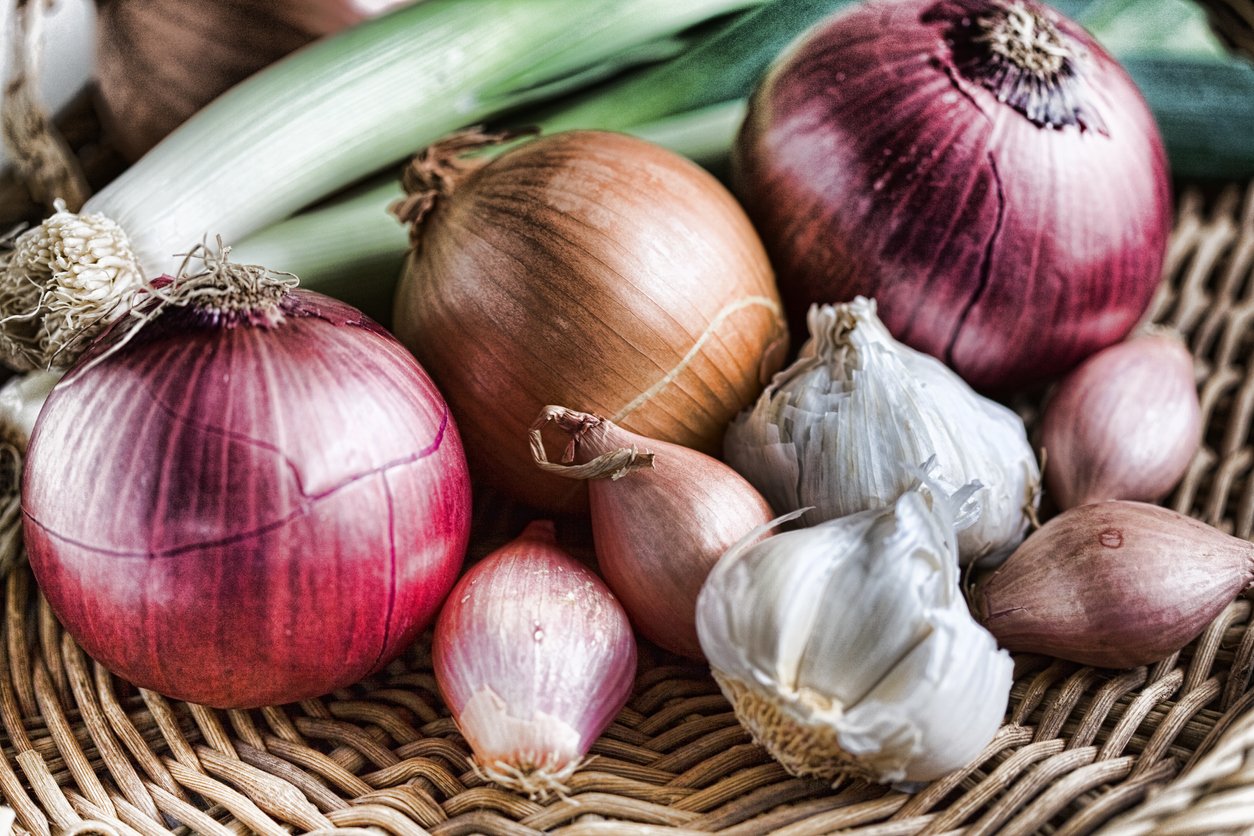
Onions and garlic were both found to increase concentrations of a few forms of glutathione in rats. Both alliums raised GSH levels in the animals’ livers and kidneys. (Our view on the use of animals in medical research is here.) This may be one of the many mechanisms by which onions and garlic can prevent cancer.
Check out our full article on alliums for much more good news about onions and garlic.
2. Avocados
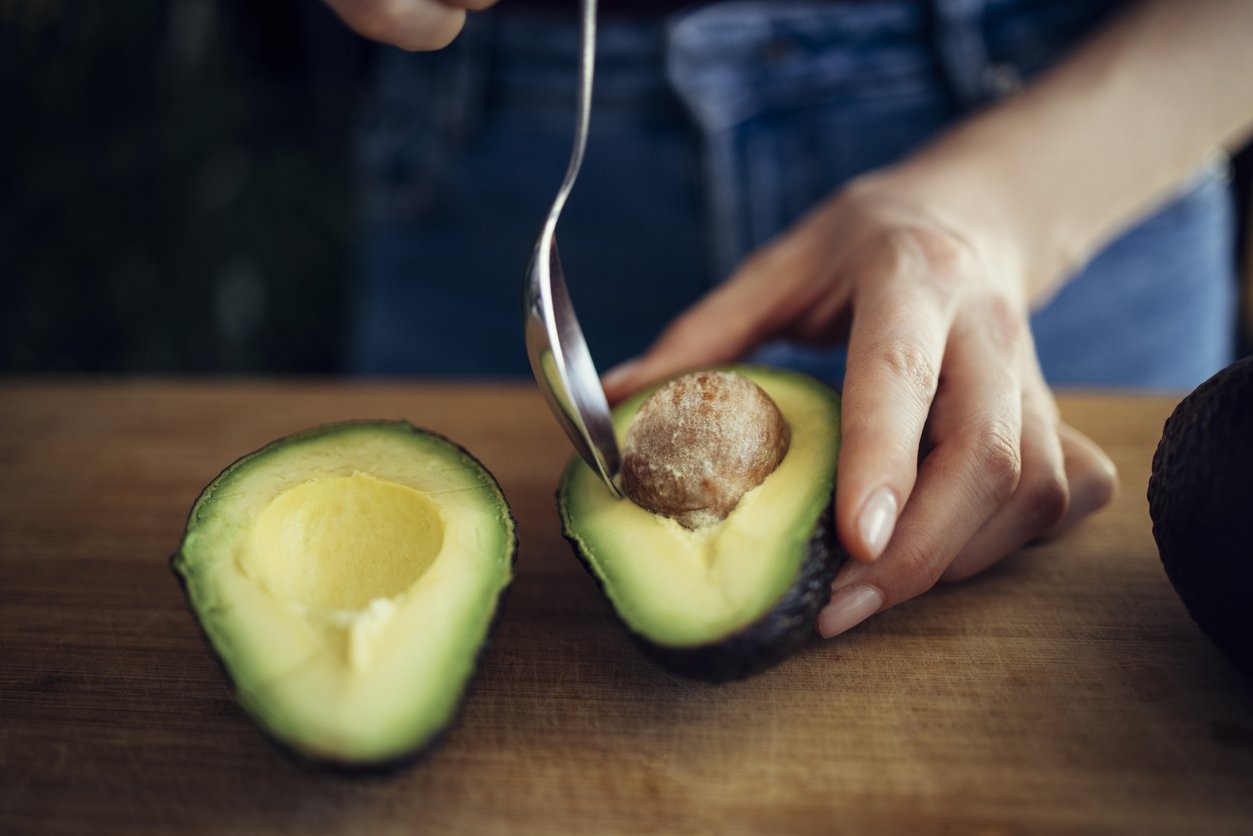
Avocados contain glutathione, along with many other health-promoting compounds. A 2021 animal study compared avocado oil to a common hypertensive drug, prazosin, and found that, while both treatments decreased high blood pressure in hypertensive rats, only the avocado oil improved the mitochondrial function in the rats’ kidney cells. The avocado oil, the researchers found, improved the ability of glutathione to neutralize free radicals and thereby prevent the damage often caused by high blood pressure.
Read all about the health benefits of avocados (with recipes) in our comprehensive article.
3. Asparagus
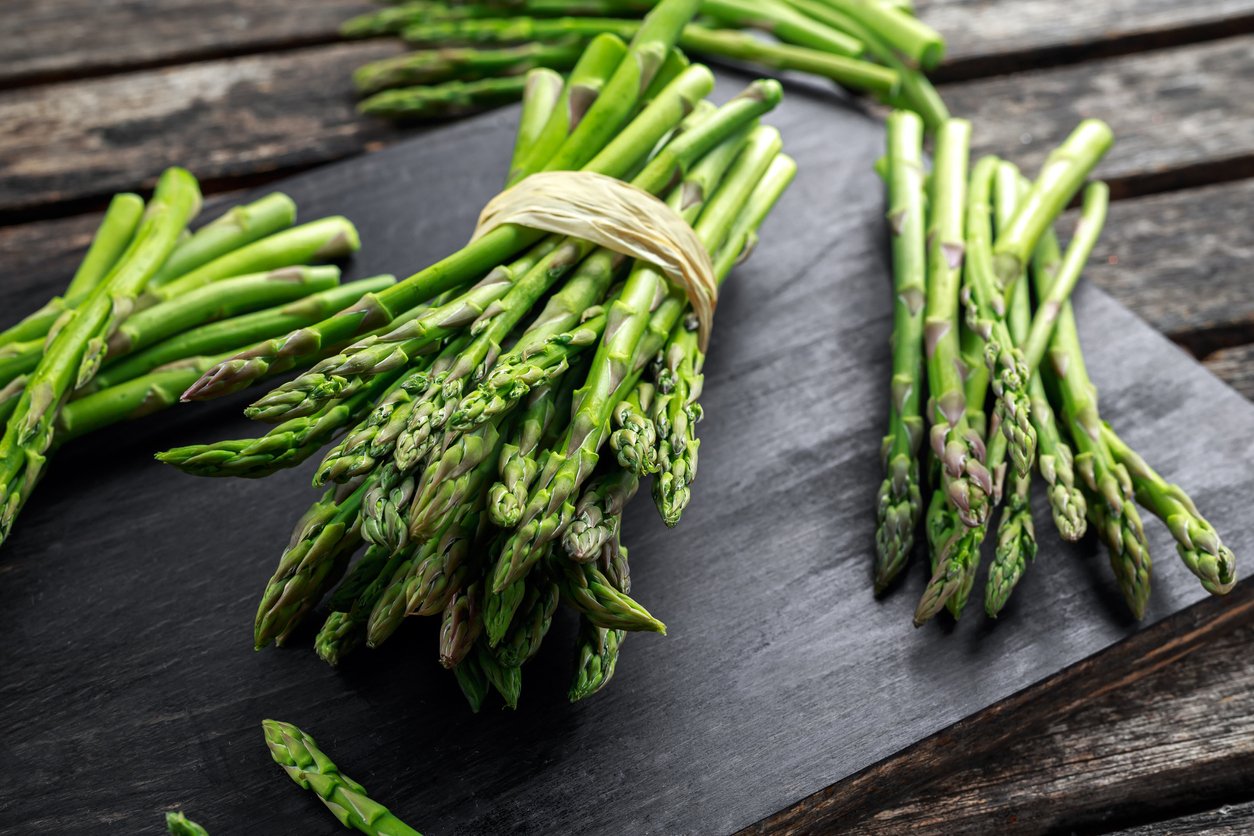
If you’ve ever eaten asparagus and then noticed a funny smell when you urinate, the culprits are sulfur-containing compounds that form when asparagusic acid breaks down. Sulfur is one of the main ingredients in glutamate, which as you may recall is one of the three amino acids that form glutathione. Sulfur is also critical for the synthesis of glutathione. For the highest concentrations of these beneficial compounds, choose brightly colored green asparagus spears rather than pale or white ones.
Other plant-based foods that are high in sulfur, and that are associated with increased glutathione levels, include cruciferous vegetables like cauliflower, broccoli, broccoli sprouts, kale, brussels sprouts, and mustard greens.
We don’t yet have a comprehensive article on asparagus, but until we write it, you can enjoy this Creamy Asparagus Risotto recipe.
4. Watermelon
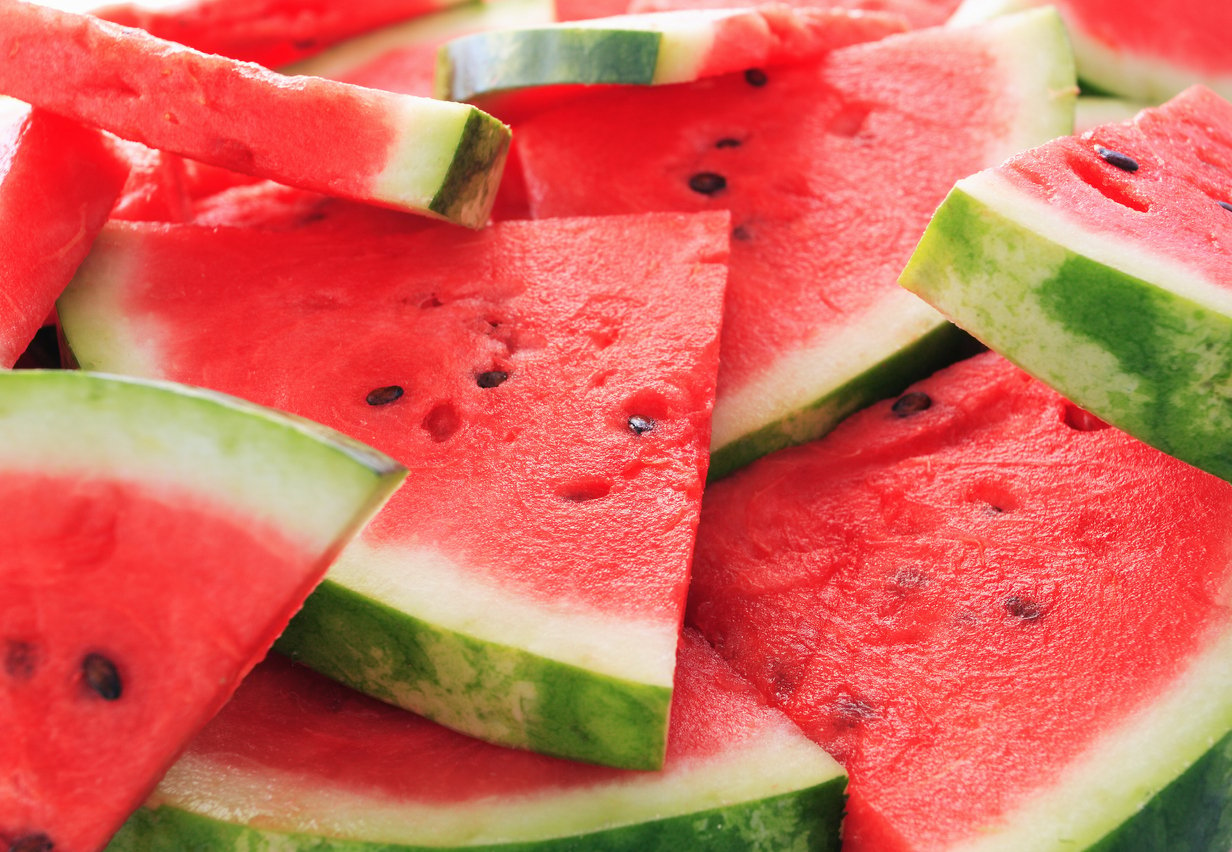
Watermelon is rich in many compounds, among them lycopene and vitamin C. Both of these may lower biomarkers of oxidative stress and inflammation, partially through increased glutathione production.
For a deep dive into watermelon nutrition, here’s our comprehensive article.
5. Pomegranate
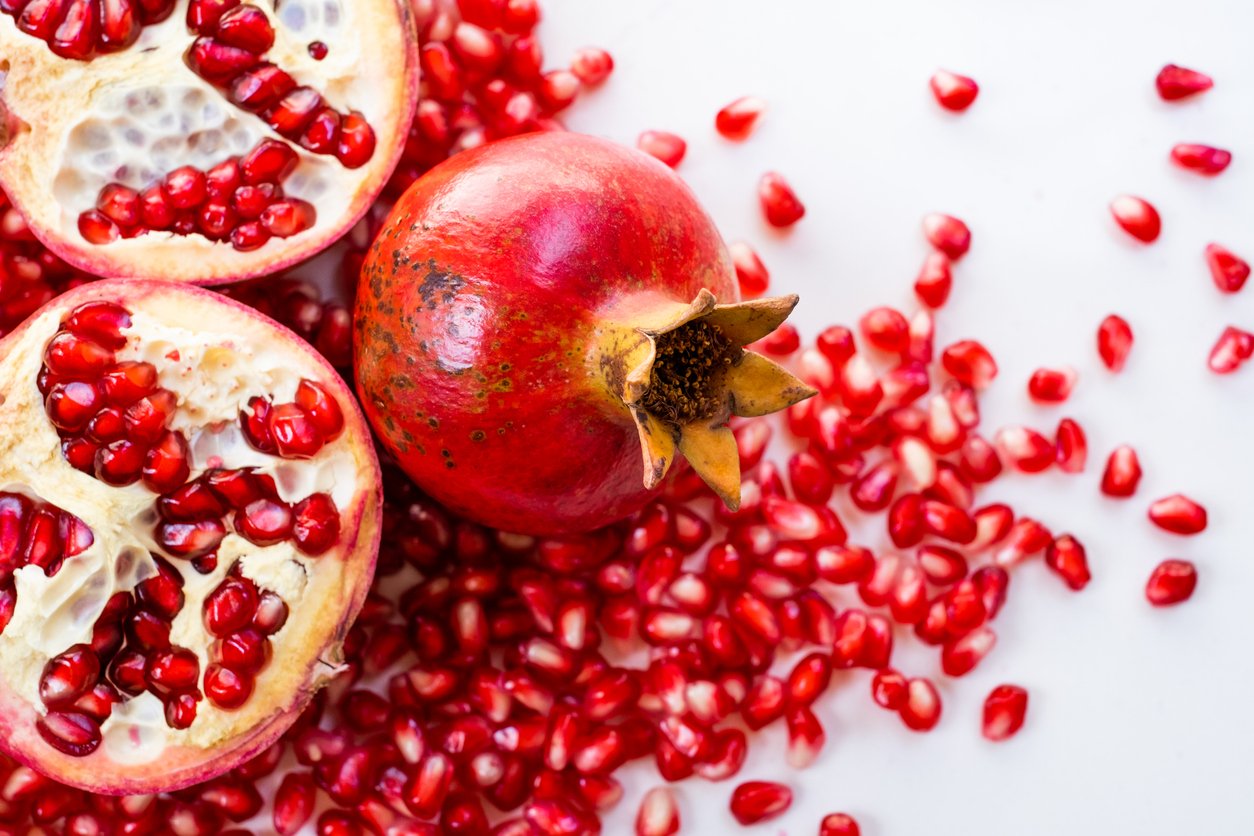
Pomegranates are another red fruit that can boost glutathione levels. A 2014 study fed pomegranate juice to 14 healthy volunteers for 15 days and found that their GSH levels had risen by almost 23% by the last day of the trial. And a 2017 study gave pomegranate juice or a placebo to 9 elite weightlifters right after a strenuous workout. Among many other positive effects, the pomegranate juice increased the antioxidant power of glutathione by about 7%.
For more information on the fabulous pomegranate (including an appropriately scholarly discussion of how many seeds are in each fruit), check out our full article here.
6. Mushrooms
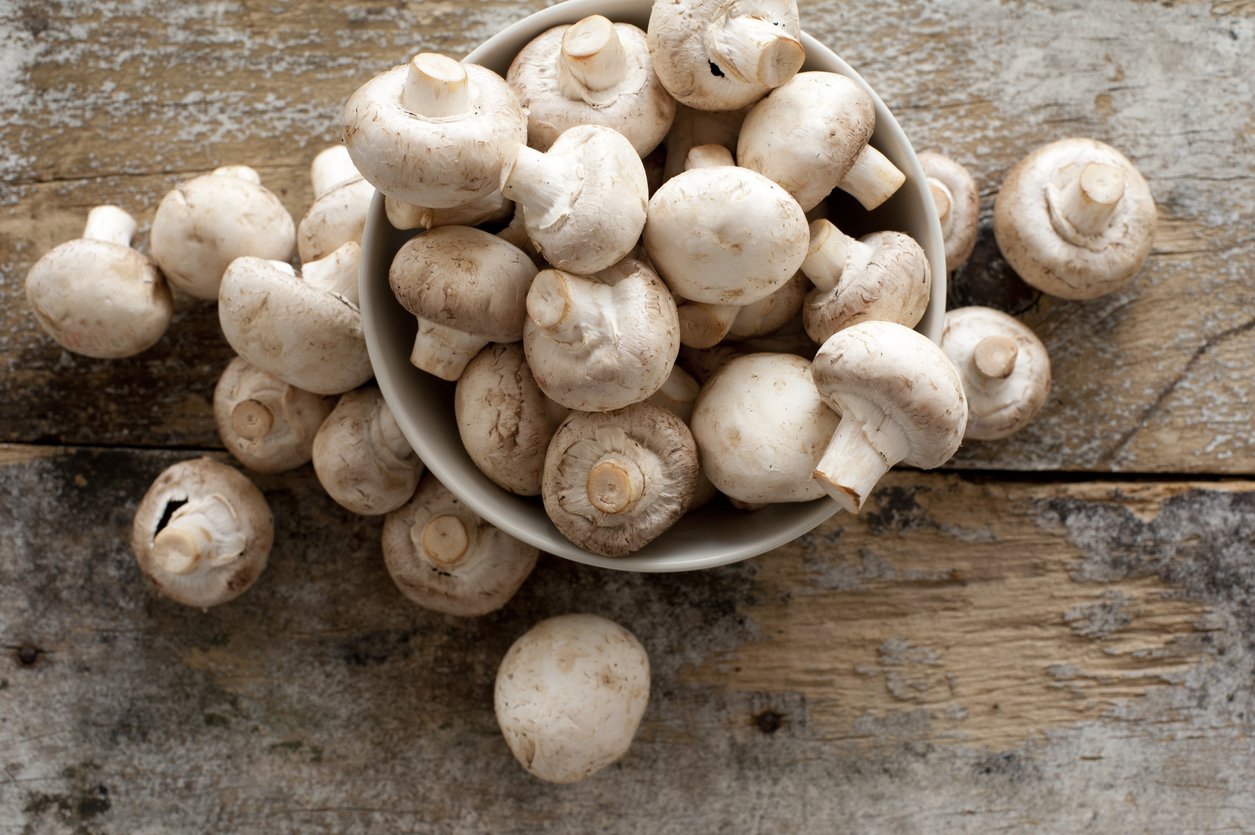
Some mushroom species are high in glutathione itself. One of them, Agaricus bisporus, may sound exotic — but fortunately, that’s just the fancy botanical term for the common white button mushroom! A long-term study of over 15,000 participants found that the more mushrooms people reported eating, the lower their chances of dying. So whether it’s the glutathione or the full symphony of nutrients found in edible fungi, mushrooms can be a great addition to most diets.
Here’s our big article all about mushrooms.
Glutathione Deficiency
Because glutathione is so important across so many systems and functions, if you’re in good health, you’re probably not deficient. But it is possible to develop a deficiency, due to either aging, certain medical conditions, or a combination of the two.
You can test for glutathione levels via a blood test. Optimal glutathione levels are between 177 and 323 μg/ml (which you say as “micrograms per milliliter”).
The tests can measure glutathione levels in both red blood cells and plasma. And another biomarker for glutathione levels is an enzyme called gamma glutamyltransferase, or GGT. When it’s high, glutathione is often low.
If you need to check your numbers, talk with your health care provider about which measure is more appropriate for you.
Do Glutathione Supplements Work?

Some studies show that supplementing with oral glutathione is effective for deficiency, while others show glutathione is poorly absorbed orally. While it may depend on the person and the condition, there’s some recent research suggesting that two forms of oral glutathione might be more bioavailable and therefore more effective in raising systemic glutathione levels.
The two forms of glutathione supplements that show the most promise are liposomal and sublingual. Liposomal glutathione supplements are prepackaged in a packet of fat cells, made to mimic the structure of our own cells. This can protect the glutathione from being broken down by digestive enzymes during the digestive process. Sublingual (under the tongue) glutathione gets absorbed into the mucous membranes of the mouth, which also increases transit time and bioavailability.
Another option is intravenous glutathione supplementation, which may also be more effective in raising blood levels than oral intake. (That kind of makes sense, since you might imagine that when you inject something into your blood, doing so would increase your blood levels of it.)
A different supplement, N-acetylcysteine (NAC), is currently being studied as a supplement for glutathione support. Again, the research is not conclusive — results differ from disease to disease. But it appears people who supplement with NAC in conjunction with cysteine and glycine may experience a boost in glutathione levels, especially among those who may not have adequate quantities of the amino acids or who need higher levels of glutathione.
Who May Want to Supplement With Glutathione?
As we’ve seen, glutathione does a lot of things. Two of its most urgent and therefore prioritized jobs are dealing with oxidative stress — basically, protecting cells from ROS and other free radicals — and detoxifying heavy metals and other contaminants. When that job becomes overwhelming, your body may not be able to produce enough glutathione to take care of other, less immediate concerns.
So if someone is dealing with lots of stress, which can also include malnutrition or exposure to environmental contaminants, they may need to supplement with glutathione just to keep up with demand.
For example, smokers and those with alcohol abuse problems tend to have decreased glutathione levels and may benefit from supplementation. And people with AIDS or cystic fibrosis may benefit from (or may need to take) glutathione supplements as well.
The elderly may also experience decreased glutathione levels as their natural supplies of the amino acids glycine and cysteine diminish.
And there’s some research showing that glutathione supplementation may aid in recovery from extended aerobic exercise, and so may become a helpful part of the regimen for endurance athletes.
A word of caution: for cancer patients undergoing chemotherapy, it’s important not to get too much, as glutathione can increase their resistance to chemo drugs.
How Much Glutathione Should You Take?
The recommended dose for adults who are choosing to supplement is generally going to be 500–1,000 mg/day of liposomal glutathione.
For glycine, the standard dosage is 3 grams per day, and it’s considered safe up to 6 grams. And for NAC, a standard dose is 600–1,200 mg (that is, 0.6–1.2 grams). And it’s safe up to 3 grams, while 7 grams or more may be toxic.
Recipes with Glutathione-Rich Foods
As we have learned, glutathione is a powerful antioxidant that’s essential for our overall health. While for some people supplementation may be beneficial, these scrumptious recipes are a whole foods way to support your natural production of glutathione. Whether you try these recipes as is, or swap out a few ingredients with others on our glutathione-rich foods list, these antioxidant-rich combinations will not disappoint.
1. Breakfast Chanterelle Avocado Toast

We couldn’t think of a tastier way to support your glutathione needs than with this delicious Breakfast Chanterelle Avocado Toast! Mushrooms are a great source of dietary glutathione, coupled with other nutrients like vitamin D, B vitamins, and fiber. This yummy toast gives you plenty of plant power to keep your glutathione levels healthy.
2. Nutty and Seedy Kale Salad with Pomegranate Vinaigrette
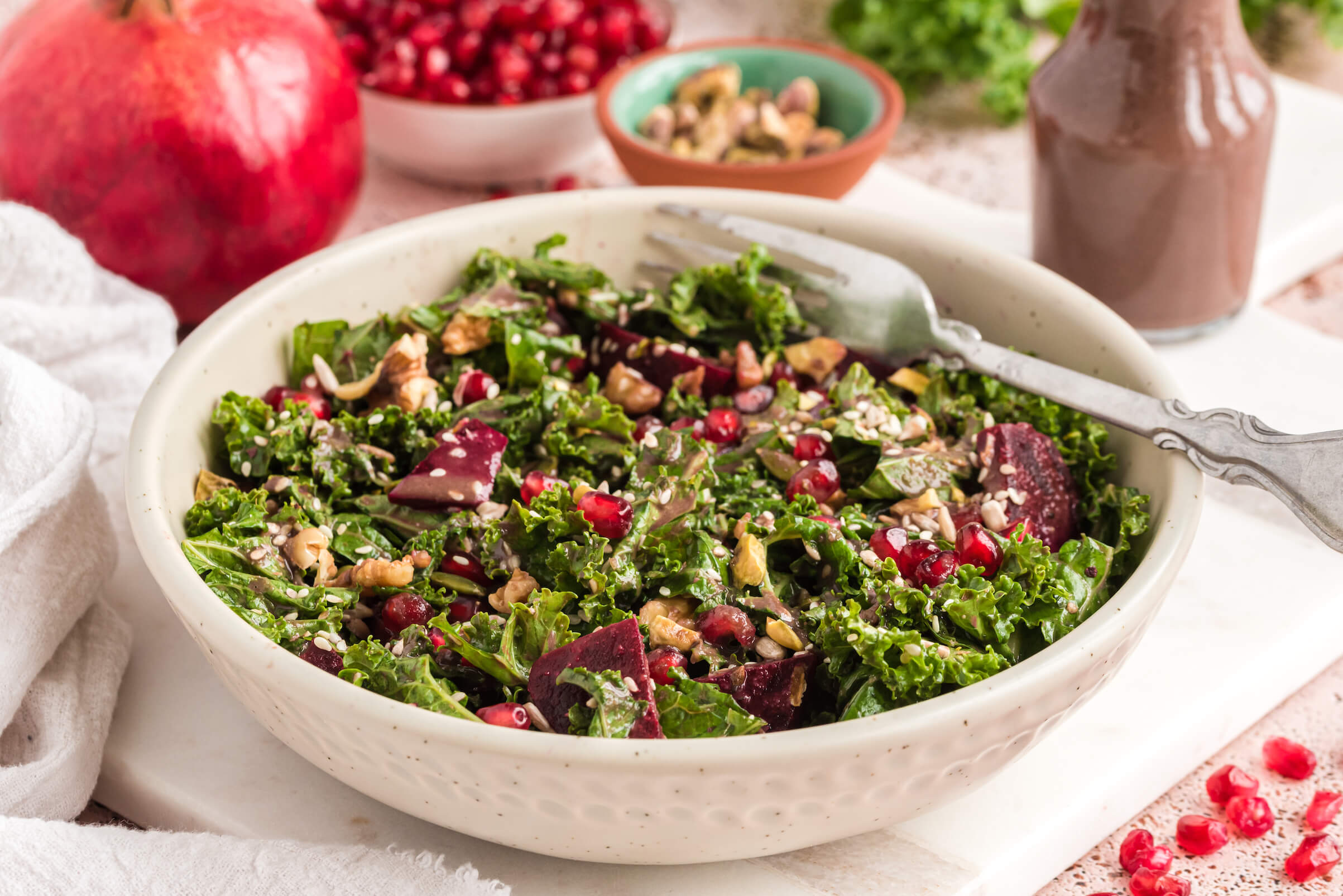
With so many flavorful and nutrient-rich ingredients, it’s no surprise this delicious Nutty and Seedy Kale Salad with Pomegranate Vinaigrette made it to our glutathione-supportive recipes list. Pomegranate and kale offer plenty of antioxidant plant power. Loaded with vitamin C, glucosinolates, and isothiocyanates, this superfood combo increases the antioxidant power of glutathione naturally, making it a great go-to recipe to support your natural glutathione production!
3. Air Fryer Chickpea Cauliflower Tacos

Crunchy air fryer tacos that can help support your immunity and improve your glutathione capacity? Sign us up! Enjoy these savory, crispy, and absolutely delicious cauliflower tacos at your next Taco Tuesday gathering (or any time of the week!), and feel the joy that comes with tasty plant-based antioxidant-rich meals. Cauliflower, kale, silky avocado cream, and green onions help to give a natural boost to your own glutathione production, making it a tasty weeknight meal your whole family will love.
Get to Know Glutathione!
Glutathione is a potent antioxidant that is vital for cellular function and immunity, among many other benefits. It protects against free radicals and oxidative stress that is responsible for a number of chronic diseases, especially those often associated with aging. For most healthy people, supplementation isn’t necessary, as our bodies can make glutathione naturally or source it from the foods we eat. But age, fitness level, and certain medical conditions may warrant supplementation, especially if a deficiency is present. You may want to consult with your healthcare provider about getting your levels checked – and if they’re low, then it’s possible you could benefit from a glutathione supplement.
If you’re looking for a liposomal glutathione supplement that’s also vegan and non-GMO, you might want to check out the Lypo–Spheric Glutathione from LivOn Laboratories. Here’s a link. (If you make a purchase from this link, a share of the proceeds will be contributed to FRN. Thank you!)
Tell us in the comments:
- What was the most surprising thing you found out from this article?
- What are your favorite high-glutathione foods?
- What recipe from this article will you make next?
Featured image: iStock.com/Zerbor

